Ikan bilis or dried anchovies are a much loved ingredient in East and South East Asia, with their strong briny scent and flavour.
Estimated reading time: 8 minutes
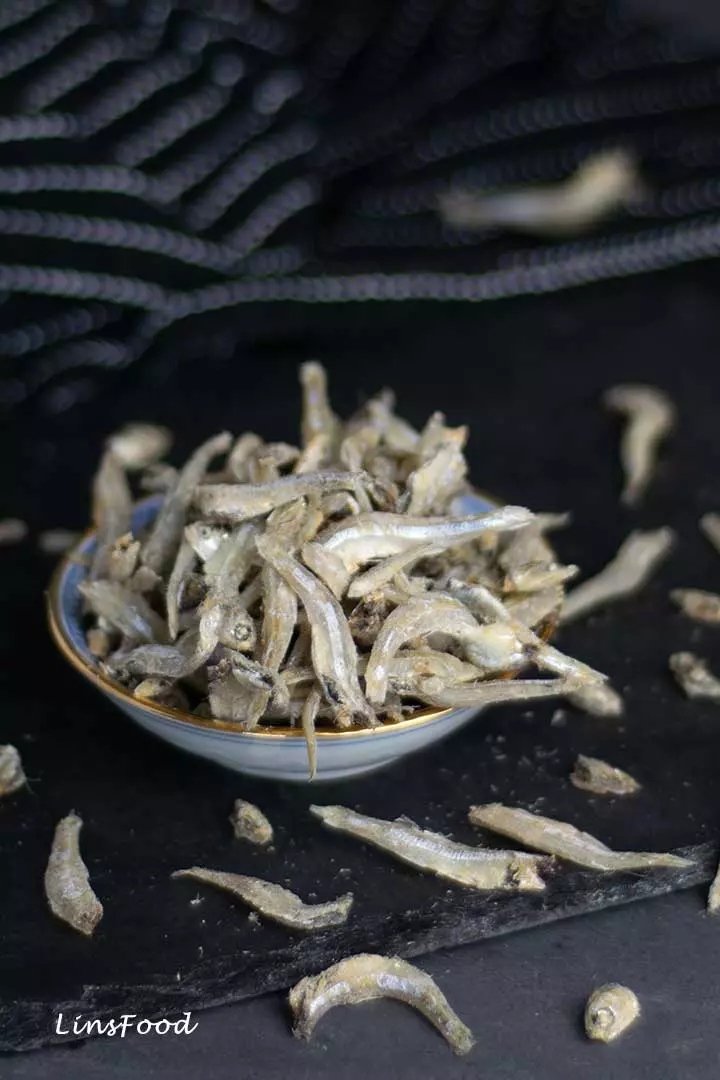
Anchovies, Anchovies Everywhere
There are many, many types of anchovies, those small fish near the bottom end of the marine food chain. They are mostly salt water fish although you do find some in freshwater.
Mostly found in temperate waters, anchovies range in size from very tiny, at 1-2 cm long (less than an inch), to over 20, even 30 cm (a foot).
They are used in so many different ways around the world, but many of these methods share one commonality – the anchovies are almost always cured in one form or another. Like the Spanish boquerones and the salted or brined variety in cans and jars.
Fresh or marinated anchovies are also very commonly used in sauces and pastes like Worcestershire sauce and the Italian salsa verde (bagna vert, click for recipe on LinsFood).
What are Ikan Bilis?
The word ikan means fish in Malay and Indonesian.
Ikan bilis is the name for anchovies in Malay, while in Indonesian, it’s ikan teri.
Pronunciation (emphasis on the bold):
- ikan = ee – kun (like in pun)
- bilis = bee – lays
- teri = tur (silent r, like British fur) = ree
Technically, it should be ikan bilis kering or ikan teri kering; kering is the word for dry in both languages. However, since we don’t really use fresh or canned anchovies like in the West, when we say ikan bilis or ikan teri, we are referring to dried anchovies.
Ikan bilis are essentially fresh anchovies that have been steamed or boiled, then air dried, resulting in slight shrinkage in size but a higher concentration of flavour and aroma. Just like dried shrimp (udang kering in Malay).
If you happen to come across the word dilis, that’s dried anchovies in Tagalog, the Filipino language.
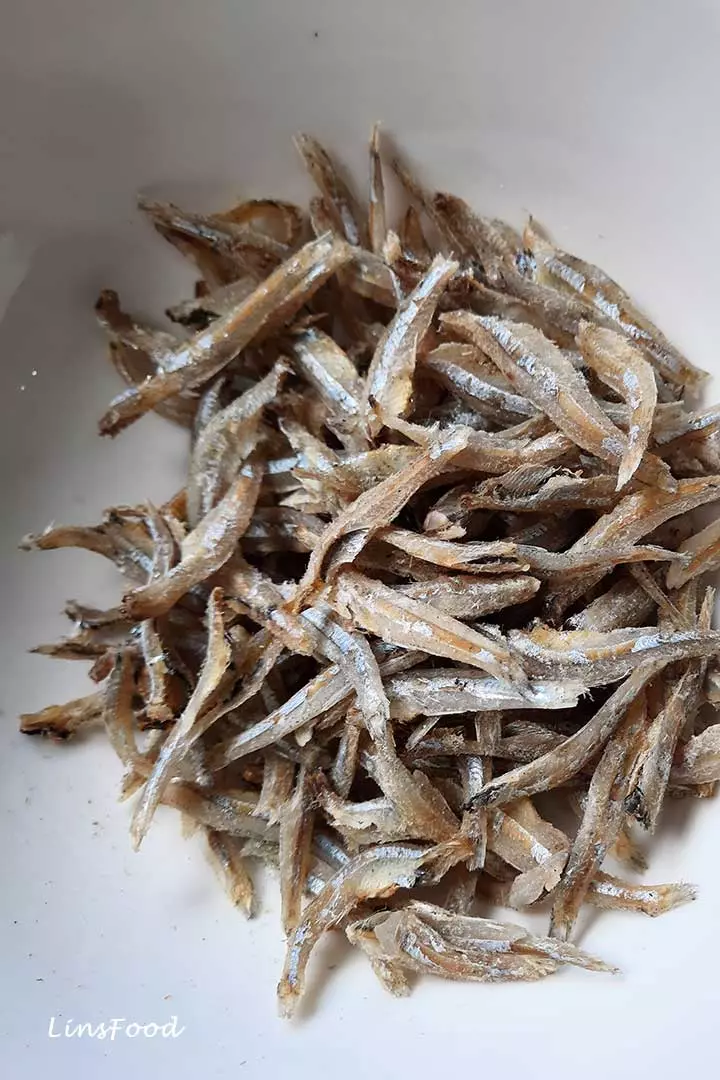
What do Dried Anchovies taste Like?
They are very salty, full of deep, umami notes and pretty much taste and smell of the sea, as I mention on LinsFood, where I first talked about dried anchovies, sometime in 2016. When fried, my late husband used to say that it reminded him of crispy bacon. So there you go.
Dried anchovies come in various sizes and are graded accordingly. Just like dried shrimp, the grade isn’t an indication of its quality. It’s just a way to differentiate the size, and therefore its purpose or use.
The medium sized anchovies are often fried to a crisp and eaten as a snack, topping or side dish. More of this below.
How to Clean Dried Anchovies?
For starters, you don’t need to wash dried anchovies. Why would you want to rinse ikan bilis to get rid of excess salt when that is their whole purpose in life? That and the umami factor.
So how do you clean anchovies?
This rather depends on the grade of anchovies, which refers to the size, as mentioned earlier. The really tiny anchovies, the ones that are only a few millimetres long, don’t need any cleaning, perhaps just a quick shake to get rid of excess dust (which would be from the anchovies). We then use them whole.
With the bigger ones, say about 5cm (2 inches) upwards, you want to remove their heads and the black, dried up guts. Many of us aren’t too fussed about the guts, just removing the top end of it along with the heads.
You can buy anchovies that are already cleaned, and, at a higher price, cleaned and split, as you can see in the images in this article.
I must confess that I am more than willing to pay the higher price to get the cleaned and split anchovies.
But in the interest of my art, I shall be doing a YouTube video about ikan bilis in the next week or two and showing you how to clean them. It’s nowhere as yucky as cleaning fresh fish or prawns, I promise.

How to use Ikan Bilis?
In so many ways! Besides South East Asia, you’ll also find dried anchovies as an ingredient in South India, Sri Lanka, Africa and East Asia.
Dried anchovies are used in many different ways depending on the region: for making stocks like dashi, for making spice pastes and also to flavour soups and stews.
However, what is interesting is that one method that is similar in all these regions is to cook up dried anchovies as a stir-fried side dish or as a condiment. So you can fry ikan bilis with ingredients like:
- onion (or shallot)
- garlic
- ginger
- chilli
- tomatoes
- peanuts
- shrimp paste (belacan)

In Singapore and Malaysia, fried anchovies are a must when serving Nasi Lemak, that coconut rice dish that is served with a a variety of condiments, as in the image below. It is also a popular addition in nasi uduk, the version found in Indonesia.
In the very traditional fried rice called nasi goreng kampung, fried ikan bilis is used both as a topping and also in the spice paste we use to fry the rice.

Basically, the most popular way to use ikan bilis in Singapore and Malaysia is to fry it and serve as a topping or garnish or to incorporate it in another dish like sambal tumis (found here, on the Nasi Lemak recipe article).
When frying ikan bilis, always stop at the golden brown stage. This is because those little things are going to keep browning once you’ve taken them out. Drain on a plate lined with kitchen paper, as in the video below.
Some people will soak them before using. But there is really no need for that, as their texture is best when they’re cooked as is.
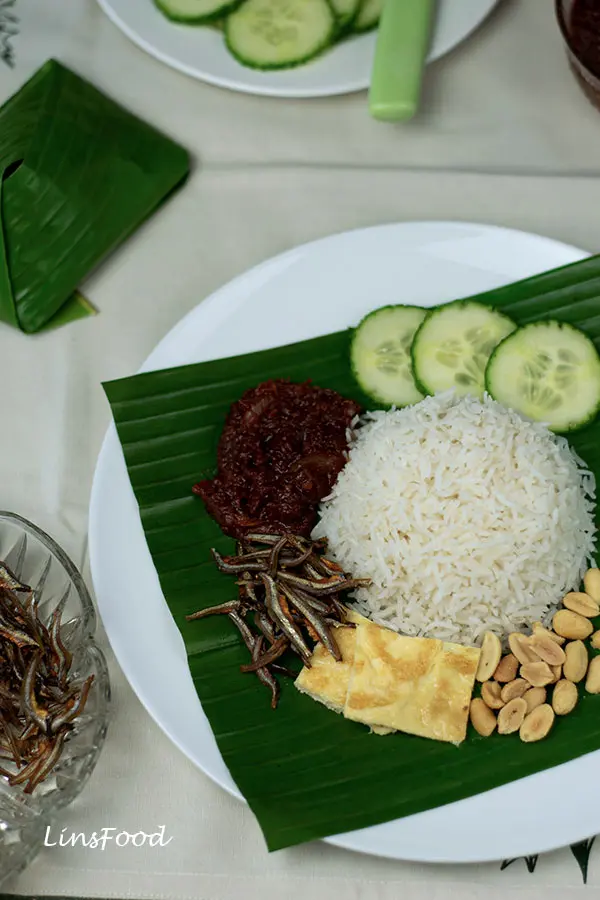
How to Store Ikan Bilis?
Dried anchovies have a very long shelf life. You could store them in the fridge until the best before date stated on the packaging. But to me, the best way to store ikan bilis is to freeze them in a ziplock bag, expelling all the air to prevent freezer burn.
If you bought them from the fridge section, then freeze and use within a year. But if you bought your dried anchovies from the freezer in your local shop, then store them until the best before date stated on the packaging. This is usually well over a year.
Where to buy Dried Anchovies?
If you have access to East or South East Asian stores, you ought to find dried anchovies in their fridge or freezer section. I get mine from my local Chinese or Korean, whichever I happen to be in.
You may also find dried anchovies in African food stores as ndakala.
Failing that, you know you’ll find them online, whether at specialist food stores or Amazon. Click here to get it on Amazon.
Substitutes for Ikan Bilis
You’re not really going to find exact substitutes for the dried anchovies that we’re talking about in this article. However, depending on how you’re planning to use them, here are some ideas.
- If we’re frying them whole and using them as a topping and garnish, perhaps sprats and small sardines might work.
- If using as a topping, crispy bacon is probably a very good substitute for that crunchy texture and salty, umami flavour. If you don’t do bacon, katsuobushi, the Japanese bonito flakes will work well.
- As an ingredient, katsuobushi, dried shrimp (udang kering) and shrimp paste will give you that salty, deep flavour you need. As will Worcestershire sauce, fish sauce and anchovy paste.
Recipes Using Ikan Bilis
I have a few recipes here on SMR and over at LinsFood that use dried anchovies. Like the following.

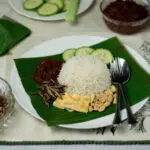
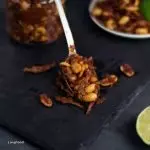
FAQ
What is the difference between ikan bilis and anchovies?
Technically, they refer to the same thing. However, in Singapore and Malaysia, when we say ikan bilis, we are referring to dried anchovies.
Do dried anchovies go bad?
Yes, despite being a preserved product, they do go bad. Freezing extends their shelf life.
Can you eat dried anchovies raw?
Sure you can, as they’ve been steamed or boiled prior to being dried. But they taste better when fried!
Do you wash ikan bilis before frying?
No, you don’t have to wash them before using. You want to retain as much of that saltiness as you can, after all, it is the salty, umami flavour that we love so much here.
How to make Sambal Ikan Bilis?
Sambal ikan bilis is a very easy recipe to make, and you can have it as a wet dish as sambal tumis or dried as in this dry sambal.
If you like the recipe, drop me a comment to let me know. And if you’re feeling like a star, don’t forget that 5-star rating! 😉Thank you!
If you make the recipe, share it on any platform and tag me @azlinbloor, and hashtag it #linsfood
Lin xx
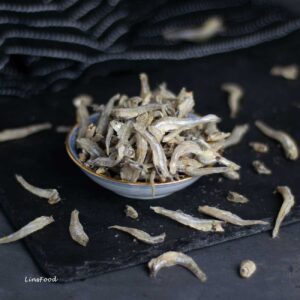
How to Fry Ikan BIlis?
Ingredients
- 100 g ikan bilis (dried anchovies)
- 125 ml vegetable oil
Instructions
- If not already cleaned and gutted, do so now. Just pinch off the head and a little of the guts. It's a tiny fish, so you haven't got much to take off. Split the anchovies into 2 if you want, but this isn't always easy, so I leave it whole.Don't wash the dried anchovies.
- Heat the oil and fry the anchovies on medium-low heat for 2 minutes until crispy. You may have to stop at 90 seconds, if they are quite brown already. This will depend on your heat. You want to stop at a golden brown stage as the anchovies will continue to brown once taken out.
- Drain onto paper lined bowl. I just use the same bowl.If you're using the anchovies for something else, like frying rice or making sambal, reserve the oil and use it in your recipe.

4 thoughts on “What are Ikan Bilis (Dried Anchovies)?”